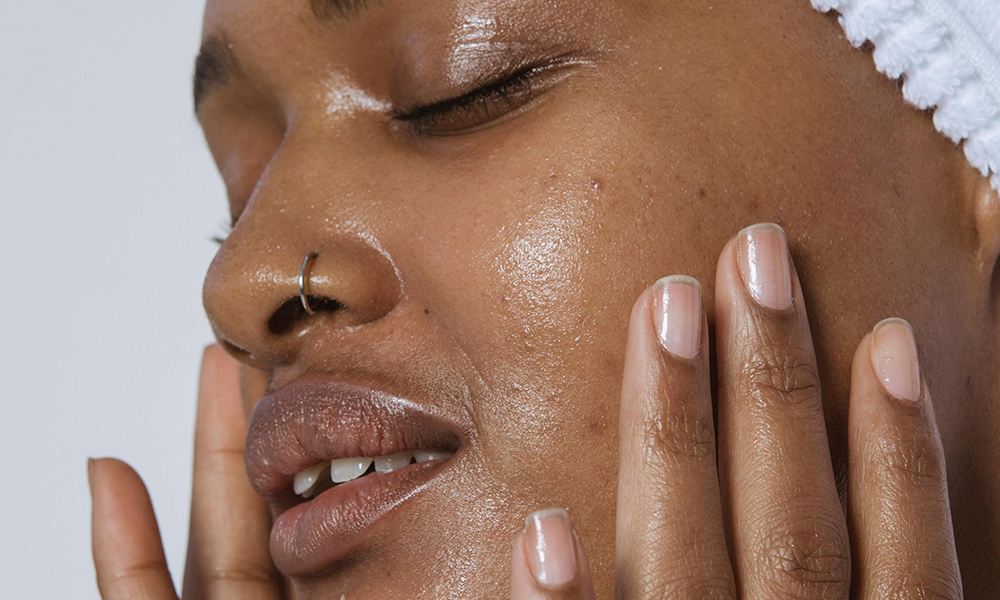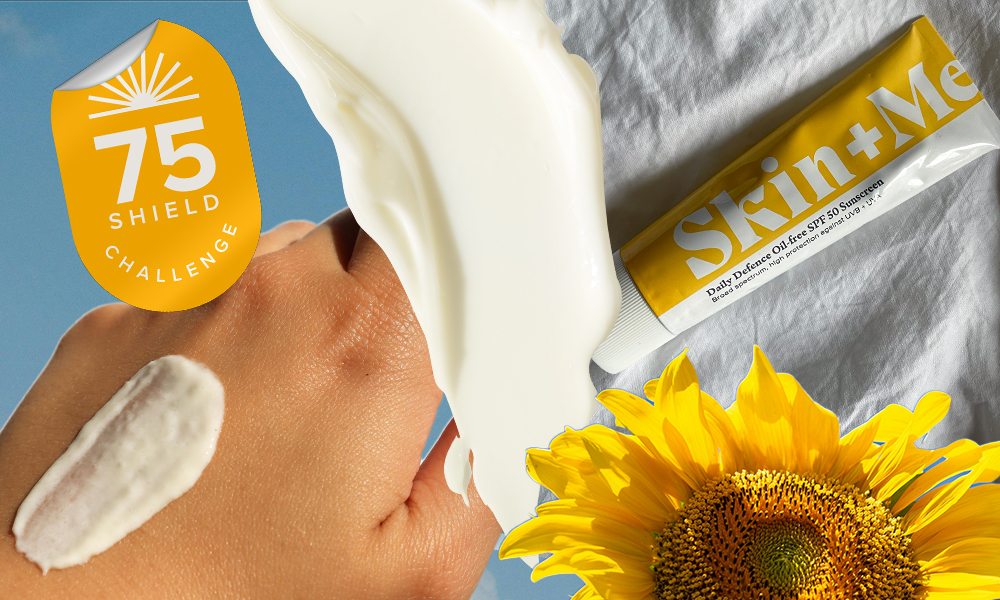Join The Skin + Me 75Shield Challenge

Link to share article here:
How To Get The Best Results When Using Tretinoin
There’s a lot of talk about tretinoin – and, as interest in the prescription-only ingredient grows, there’s also a lot of misinformation out there. Today we’re here to sort fact from fiction, and explain everything you need to know about retinol’s older, more powerful sibling.
From how, when, where and more, our expert dermatology team is ready to reveal everything you ever wanted to know about using tretinoin.
What is tretinoin?
“Tretinoin is a prescription-strength topical cream used to treat acne, hyperpigmentation, sun damaged cells, fine lines and wrinkles,” explains Dr Ben Esdaile, Consultant Dermatologist at Skin + Me. “It belongs to a family of synthetic and naturally-occurring compounds called retinoids that are all derived from Vitamin A.” Retinol and retinal are two other members of the family you might have heard of before.
“Tretinoin was first used in 1962, and has over 50 years of scientific evidence resulting from clinical use to support its efficacy,” Dr Ben continues. “Tretinoin works directly on the retinoic acid receptors found on your skin cells, making it the most powerful retinoid available.”
What is the difference between tretinoin and retinol?
As we mentioned, tretinoin and retinol are members of the same family – however, there are a few key differences between the two.
“Retinol needs to be converted by enzymes in the skin into retinoic acid for it to have any beneficial effects. Tretinoin already is retinoic acid, so is far more potent than retinol and more effective,” explains Dr Malvina Cunningham, Consultant Dermatologist at Skin + Me.
“It’s also worth pointing out that retinol is extremely unstable and will often be degraded, even before it reaches your skin (a recent study looking at different retinol products showed alarmingly low amounts of retinol),” Dr Malvina continues. “Prescription tretinoin has to go through stringent testing to prove it has the correct amount of tretinoin in the product.”
What are the benefits of tretinoin?
Tretinoin’s growing popularity is down to its power and versatility – this ingredient is a gold standard treatment for several different skin concerns.
“Tretinoin works to accelerate new skin cell growth, speeding up the removal of dead cells and debris that can block pores,” says Dr Ben. “It also works to repair sun-damaged cells and boosts the production of collagen, a protein that acts like scaffolding for your skin. Tretinoin is also used in the treatment of acne, visible pores, fine lines and wrinkles, texture and unwanted pigmentation.”
Is tretinoin safe to use?
Tretinoin is very safe, but it’s a prescription treatment, so you should only use it under the guidance of a medical professional.
“Studies have been done where people have used tretinoin regularly for between one and four years, and these have shown that clinical improvements (as well as improvements seen under a microscope from biopsies) are seen over long periods and these benefits increase over time,” explains Dr Ben. “These studies have shown that consistent use for at least six months is needed to see best results and they also tell us that long-term use of tretinoin is safe, with no untoward effects.”
However, if you’re pregnant, breastfeeding or trying to conceive, you should not use tretinoin or any retinol creams, as they are not known to be safe for babies.
When should I use tretinoin?
Tretinoin can increase the photosensitivity of your skin, meaning that it is more prone to sun damage. For this reason you should only ever use tretinoin at night, and make sure you always wear a broad spectrum sunscreen with at least SPF 50 during the day.
How much tretinoin should I use?
Always use tretinoin exactly in the way your doctor or prescriber tells you to. If you’re using a tretinoin-only cream from a dermatologist or GP, there will be directions on the packaging explaining how much to use and how often.
At Skin + Me, we formulate tretinoin treatments into our Daily Doser, which dispenses the perfect amount every single time. All you need to do is twist and click the Daily Doser – the concentration evolves as your skin adapts, while the quantity of cream stays the same.
Are there any side effects when using tretinoin?
Tretinoin is safe to use, but it can take some time for your skin to adapt to the powerful ingredient when you first start using it.
“You may experience peeling and irritation, including dryness, redness, burning and stinging,” says Dr Malvina. “This is usually temporary and lasts while your skin is adjusting to all these changes that the retinoids are causing – a process that’s been referred to as ‘retinisation’.”
If your skin is on the sensitive side, you can start off by using your treatment just a few times a week, building up to alternate evenings and then every night once your skin has adjusted.
How should I apply tretinoin?
Cleanse your skin to make sure your skin is clean and free from makeup and sunscreen before applying your tretinoin. Smooth it into your skin, taking care to avoid the delicate skin around your eyes and mouth.
If you’re noticing some peeling or redness then you can use a technique called buffering. Apply some moisturiser to your skin and let it soak in before applying your tretinoin – this will ease some of the irritation.
Then, about ten minutes after applying tretinoin, you can seal it all in with your moisturiser. Consistency is key, so make sure your tretinoin becomes part of your regular routine, rather than an occasional afterthought.
Can I combine tretinoin with other skincare products?
It’s best not to overload your skin, especially when you’ve just started using tretinoin – we’d recommend stripping back your routine to just four steps. Cleanse with cleanser, treat with tretinoin, hydrate with moisturiser and protect with sunscreen. You might want to start adding in other ingredients once your skin has adjusted, but we’d recommend you read our guide to mixing active ingredients with tretinoin and speaking to your Dermatology Clinician first.
If you’re using a Skin + Me Daily Doser including tretinoin, then your bespoke formulation might include other ingredients, like azelaic acid and niacinamide, for a multi-active approach to your skin concerns.
Can I use tretinoin alongside cosmetic treatments?
You can use tretinoin alongside some cosmetic treatments, but you’ll often need to pause your tretinoin treatment to give your skin a break before and after your cosmetic appointment. Dr Malvina offers a good rule of thumb. “Any procedures performed should be discussed with the clinician or aesthetician performing them.
Depending on the type of treatment they’re offering, they’ll be able to advise and give their preference on when tretinoin treatment should be stopped.” Bookmark our guide to aesthetic treatments and tretinoin to give you an idea of the breaks you should take.
Will my skin purge if I use tretinoin?
You might have heard of purging or even “the retinoid uglies”, a tongue-in-cheek way of referring to the annoying spots that can pop up when you start using tretinoin.
“Skin purging is when you experience a breakout or a worsening of existing acne in response to starting a new skin treatment,” says Dr Ben. “This can be extremely frustrating when the treatment appears to be making your skin worse instead of better.”
However, it’s usually nothing to worry about – think of it as a spring clean for your skin, making way for new, healthy skin cells. “If this happens to you, don’t panic – this is a normal process in the journey to clearing your skin and is known to occur in up to a quarter of people with acne,” Dr Ben says. If you need some reassurance, read our guide to purging here, and if you’re really worried about your skin you can always reach out to your prescriber for some extra reassurance.
Final thoughts
Tretinoin is a powerful prescription ingredient and you’ll get the best results if you use it consistently and with care. Check in with your prescriber if you have any questions, and check out our in-depth guides to using tretinoin below:
- Can You Use Tretinoin In Summer?
- Can You Use Tretinoin In Winter?
- Combining Cosmetic And Beauty Treatments With Tretinoin
- Using Tretinoin On Sensitive Skin
- Mixing Active Ingredients with Tretinoin
- Exfoliation And Tretinoin
New to Skin + Me? Get your first month of personalised skincare for £4.99 with promo code DOSE – complete our quick consultation here.
Looking for a routine refresh? Add the Dream Routine to your Skin + Me subscription.
In need of a restock? Head to The Skincare Shop for one-off purchases of your Routine Essentials.



